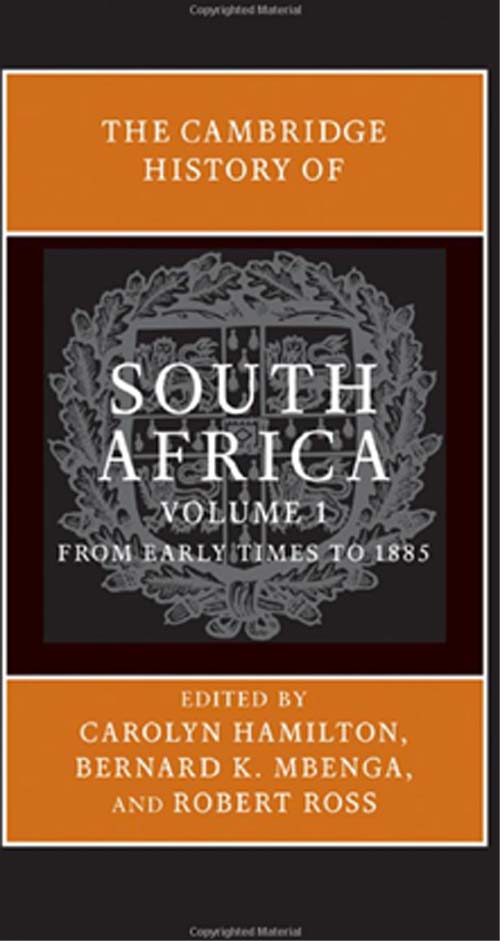The Cambridge History of South Africa
Review

The Cambridge History of South Africa: Volume 1, From Early Times to 1885 by Carolyn Hamilton, Bernard K. Mbenga and Robert Ross (eds.)
(Cambridge University Press), 2010
466pp., £80 hard, ISBN 0-978-521-51794-2
I am writing this review an hour before England's first match of the World Cup in the ‘Rainbow Nation'. For those of us who lived through and campaigned against the apartheid system and watched Nelson Mandela walk to freedom, the transformation of South Africa in the last twenty years has been little short of miraculous. Although racial tensions remain, largely because the native population remains at the base of the economic system, the democratic transformation of South Africa borders on the miraculous.
The extent to which the historiography of South Africa has changed can easily be appreciated by comparing this book with the volume in the Cambridge History of the British Empire. Although imperial dimensions are important in three chapters, the remainder places the emphasis far more on the interaction between the different native groups in the area that later became South Africa. The result is a book that draws together revisionist thinking over the past four decades and presents a detailed overview of the South African past from the early Iron Age to the beginnings of the mineral revolution on the Rand in the 1880s.
Importantly, it reflects the important recent research on the relations between Africans and colonial invaders, a process aided by the consideration given to identity and consciousness. The opening chapter, by the editors examines the production of pre-industrial South African history and is, I think, a seminal piece of writing establishing the chronology of historiography within a revisionist framework. It is followed by two chapters that examine the development of farming communities up to the sixteenth century. The emergence of colonial society in the Cape until the advent of British power in 1800 is the subject of the fourth chapter, a fascinating study of the interplay between African communities and Dutch immigrants.
The next three chapters consider political transformation beyond the Cape, the emergence of settler capitalism in the wake of the abolition of slavery in the 1830s and its political counterpart with the shift from colonisation to imperial conquest. The book ends with a highly innovative chapter on transformations in consciousness. Although there is no specific bibliography, the footnotes are detailed and illustrative of the dynamism of South African studies and the index is comprehensive. This is an extremely well balanced book with contributors who have synthesised mountains of research into succinct and well-written chapters. It is essential for anyone teaching South African history.

